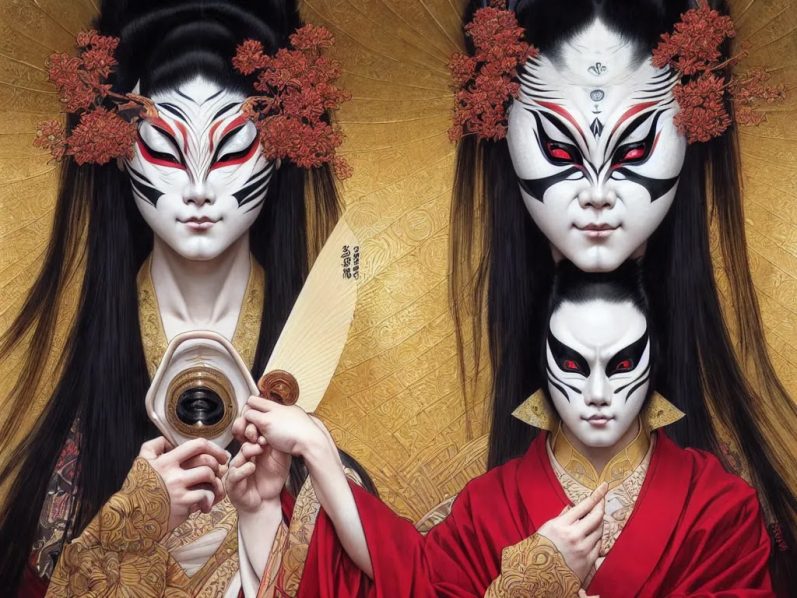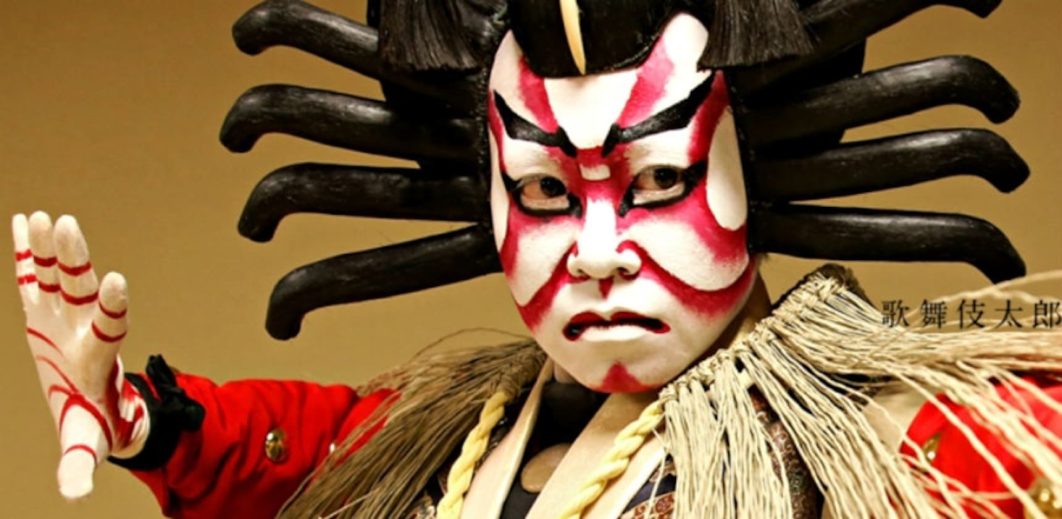
The Kabuki mask is an ancient art that has long existed in Japanese culture. Being an intricate part of Japanese culture, it is considered a symbol of traditional Japanese art and the masks are used in Japanese theatre, such as Noh and Bunraku. In recent times, they are worn by theatre actors or Shinto dancers, especially during special Japanese festivals.
A Kabuki mask is a type of traditional Japanese mask used in the Kabuki Theatre. Even though it is a mask, Kabuki is also a form of theatre that originated in Japan in the 17th century and is known for its elaborate costumes, make-up, and highly stylised performances.
[ad]
Kabuki actors, known as kabukimono, began to wear highly stylised masks and makeup to exaggerate their facial expressions and convey emotions to the audience or embody characters such as demons which appear more expressive and dramatic.
Kabuki masks are typically worn by male actors and are used in both onnagata (female role) and tachiyaku (male role) performances. They are typically worn during specific scenes or acts, such as during a fight or a dance.
Kabuki masks are used to portray characters in the play and are often brightly coloured and intricately detailed. The origins of kabuki masks can be traced back to the Edo period (1603-1867) in Japan. Kabuki theatre being a form of entertainment was popular among the common people. They can be made of wood, leather, or other materials. These masks are used to exaggerate the expressions and emotions of the actors during their performance, making
the audience identifies their characters.
The masks were also used to conceal the actors’ identities, as Kabuki actors were often of low social status and not considered suitable for public appearances. These masks and makeup have become an important part of the kabuki tradition, and are used to convey the characters’ identities, personalities, and emotions.
Jumping unto the symbolism behind the kabuki mask, it is multifaceted such that the kabuki mask is rooted in the traditional Japanese belief that masks have the power to transform the wearer into the character they depict.
Another symbolism of kabuki masks and makeup varies depending on the character and emotions being portrayed such as warriors, demons, and old men or conveying different emotions, such as anger, sadness, and joy.
Also, some common themes in kabuki theatre include beauty, power, and tragedy. For example, the masks worn by female characters, known as onnagata, are often highly stylized and idealised, while the masks worn by male characters, known as tachiyaku, are often fierce and powerful.
Still on symbols, the masks are also used to express the duality of human nature, as they often depict both good and evil characters.

The masks are carefully crafted and painted and are considered works of art in themselves that they are popular with collectors. kabuki masks are used in conjunction with other props and stage sets to create a complete performance.
Kabuki masks and makeup are worn by actors during performances of kabuki plays. The actors also wear traditional kabuki costumes, which are also highly stylized and symbolic. Kabuki is considered an important part of Japanese culture, and it is still performed today in traditional theatres across Japan.
Other similar masks in other Asian countries include the Chinese opera mask and the Korean Talchum mask. These masks are used in traditional theatre performances to represent different characters and convey emotions.
Chinese opera masks are similar to kabuki masks in that they are used to convey the emotions and character of the actors. They are typically made of papier-mâché and are decorated with intricate designs. However, unlike kabuki masks, Chinese opera masks are worn by both male and female actors.
The Korean Talchum mask is also similar to the kabuki mask, as it is used to convey the emotions and character of the actors. The masks are typically made of wood and are decorated with intricate designs. They are typically worn during specific scenes or acts, such as during a dance or a fight.
Overall, the kabuki mask, Chinese opera mask, and Korean Talchum mask are all similar in that they are used to convey the emotions and character of the actors and are decorated with intricate designs. However, each mask has its own unique cultural significance and is used in different traditional performances.
The masks used to exaggerate the features of the characters, making them more expressive and dramatic has become a part of Japanese culture, rooted in tradition and has been passed down from generation to generation. It is a symbol of the rich cultural heritage of Japan and continues to be an important part of the country’s cultural identity.
[ad unit=2]








